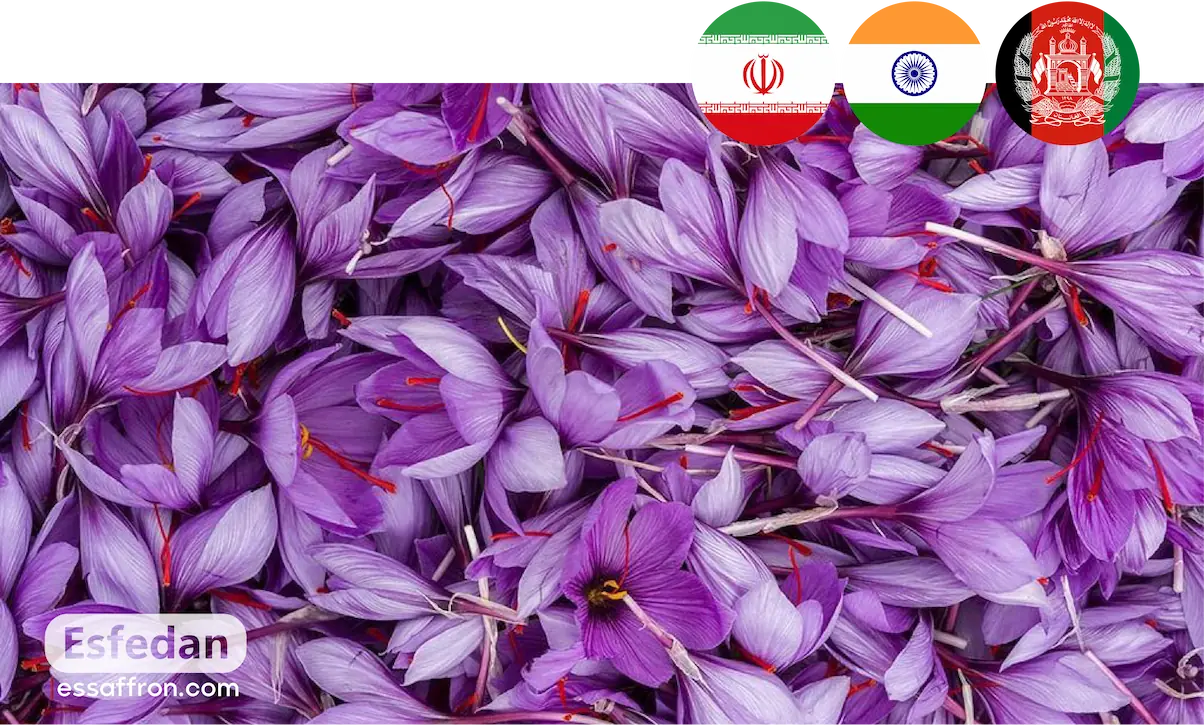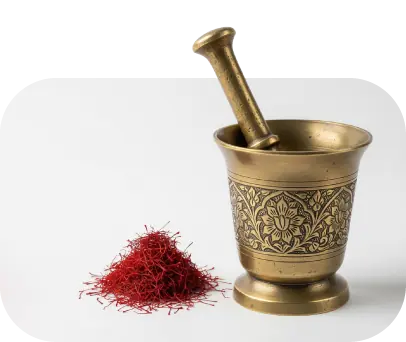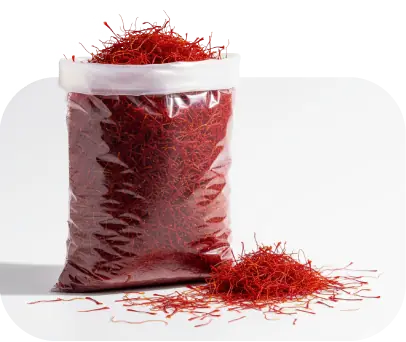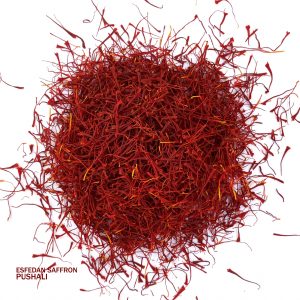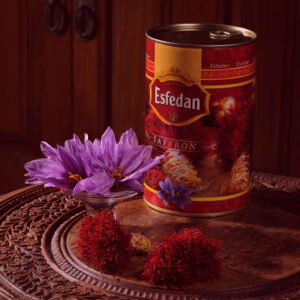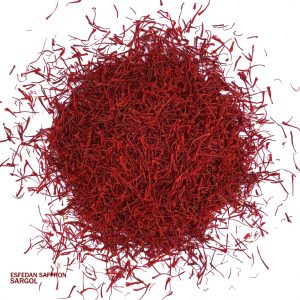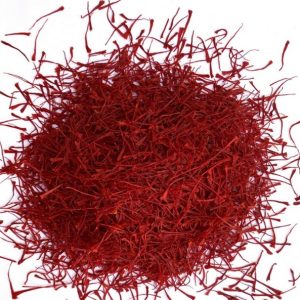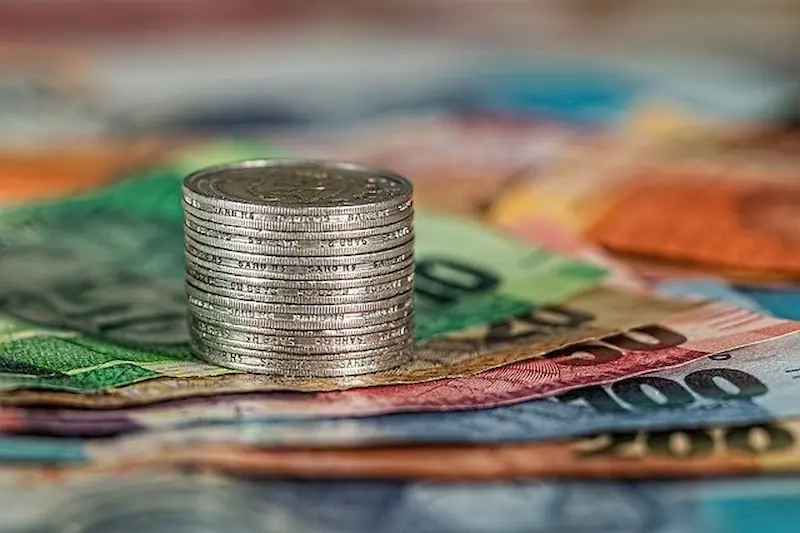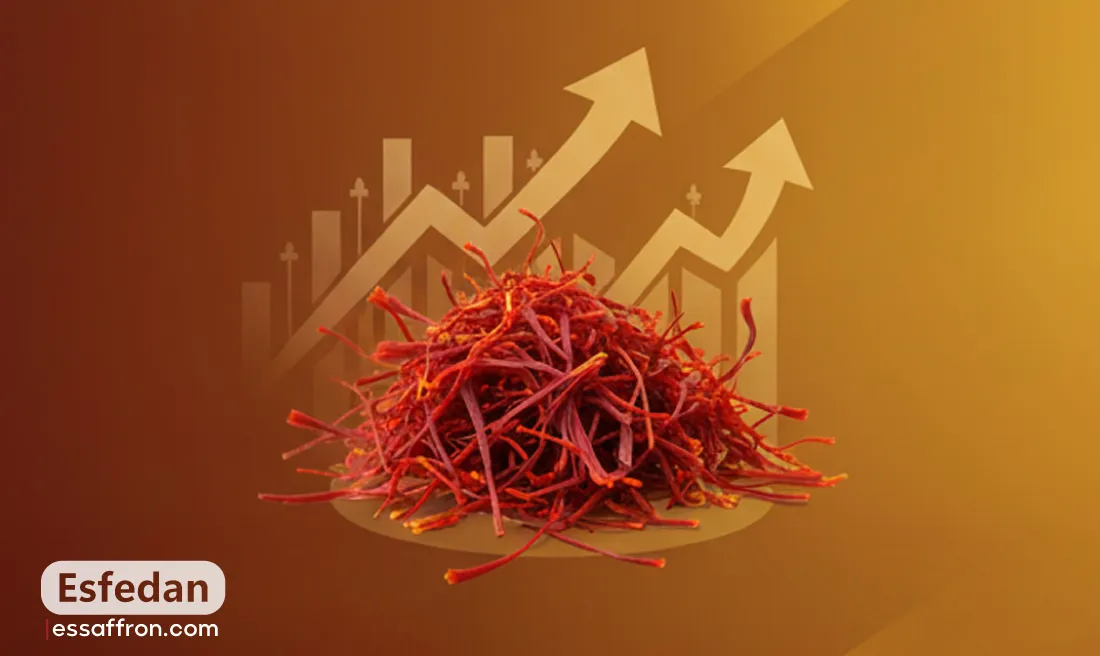Iran is by far the world’s largest saffron producer, contributing over 85–90% of global supply in 2025. Spain, India (Kashmir), Afghanistan, and Morocco also produce saffron, though at smaller scales. Market trends show Iran’s dominance in volume, while Spain leads in premium branding and packaging.
Global Overview — Saffron Production in 2025
Saffron cultivation is spread across several countries, but five nations dominate in production and reputation. Iran remains the global leader, followed by Spain, India (Kashmir), Afghanistan, and Morocco. Smaller contributions come from Greece, Italy, and China.
Table: Saffron Producing Countries (Indicative 2025)
|
Rank |
Country | Estimated Production Volume (Tons/Year) | Estimated Global Market Share (%) |
Notes & Main Production Regions |
| 1 |
Iran |
~400 | ~90% |
The world’s primary production hub, the Khorasan provinces |
| 2 |
India |
~20 | ~4.5% |
Mainly in the Kashmir region (Kashmir Saffron) |
|
3 |
Afghanistan | ~18 | ~4% |
Fast-growing; Herat province (high quality) |
|
4 |
Greece | ~7 | ~1.5% |
Kozani region (PDO protected status) |
|
5 |
Morocco | ~6 | ~1.3% |
Taliouine region (Atlas Mountains) |
|
6 |
Spain | ~2 | ~0.5% |
Primarily an importer and re-exporter, La Mancha |
|
7 |
Italy | <1 | <0.1% |
Limited, very high-quality production; Abruzzo |
|
8 |
Turkey | <1 | <0.1% |
Small-scale production; Safranbolu |
|
9 |
Azerbaijan | <1 | <0.1% | Limited production with historical roots; Absheron |
|
10 |
China | <1 | <0.1% |
Emerging producer; mostly for medicinal use |
Source: Data aggregated from FAO, Tridge, and various market analysis reports for 2023-2025.
Key takeaway from the table: As is evident, Iran is, by an incomparable margin, the dominant force in global saffron production. The next nine countries combined account for less than 10% of the market, which clearly illustrates the scale of Iran’s leadership in this industry.
1. Iran: The Epicenter of Global Saffron Production and Quality
When the question arises, “Who is the biggest producer of saffron in the world?”, all statistics and experts point to a single name: Iran. Producing around 90% to 95% of the world’s total saffron, Iran authoritatively holds the No. 1 position in saffron production in the world. This massive volume, exceeding 190 metric tons annually, makes Iran the primary player in the global saffron market. This dominance makes it the go-to source for importers looking to buy wholesale saffron. But Iran’s dominance isn’t just about quantity. Iranian Saffron is widely recognized as the world’s best saffron in terms of quality. This unparalleled quality is the result of several key factors.
Ideal Climate and Soil: Vast regions of Iran, especially the Khorasan province, boast a unique climate. Cool winters followed by warm, dry springs provide the perfect environment for the Crocus sativus flower to thrive. Centuries of Knowledge and Experience: The art of saffron cultivation has been passed down through generations of Iranian farmers. This traditional knowledge of planting times, manual flower harvesting methods, and drying techniques directly impacts the final product’s quality. Powerful Chemical Composition: Persian Saffron contains the highest levels of crocin (the compound responsible for color) and picrocrocin (responsible for flavor), resulting in a much stronger aroma, taste, and color compared to saffron produced elsewhere.
Where is Iran’s Saffron Hub?
The heartland of Iran’s saffron production is the Great Khorasan province (including Razavi, South, and North Khorasan provinces). Cities like Qaenat, Torbat-e Heydarieh, and Zaveh are known as the capitals of Iranian saffron. However, in recent years, saffron cultivation has expanded to other provinces with suitable soil and climate, such as Isfahan, Kerman, and Fars. Now, here’s an interesting point about the quality of saffron from Iran. Because it’s so high-quality, it’s typically sold in a few different types or grades. This grading is simply based on how much of the pure red, flavorful part of the thread is included, versus the yellow or white part. The best and purest type, known as Negin, consists of only the all-red, thick parts of the thread and has no yellow attached.
More information: Types of Iranian Saffron
Despite these advantages, Iran’s saffron industry faces challenges. A major issue is bulk exportation without proper packaging. This often results in the world’s best kesar, produced in Iran, being packaged in countries like Spain or the UAE and sold under their national brands. This challenge, along with the impact of climate change on recent yields, remains a primary concern for the industry.
2. India: Home of the World-Renowned Kashmir Saffron
The second spot on the list of saffron-producing countries belongs to India, which has earned global fame for its high-quality and renowned saffron from the Kashmir region. A significant portion of production in India, one of the primary saffron-producing states, is concentrated in Pampore, famously known as the ‘Saffron Town of Kashmir’. The region’s unique climatic conditions, high altitude, and rich soil provide the ideal environment for cultivating and harvesting saffron, celebrated for its potent aroma, flavor, and unique color. Kashmir Saffron, often referred to in India as Kesar, is highly prized for its long, thick, and deep-red stigmas (threads). This saffron is so unique that it has been awarded a protected Geographical Indication (GI) tag, which guarantees its authenticity and superior quality. However, despite its high quality, India’s production volume is only a small fraction (around 5-7% of global production) of Iran’s, making it an important but much smaller-scale producer.
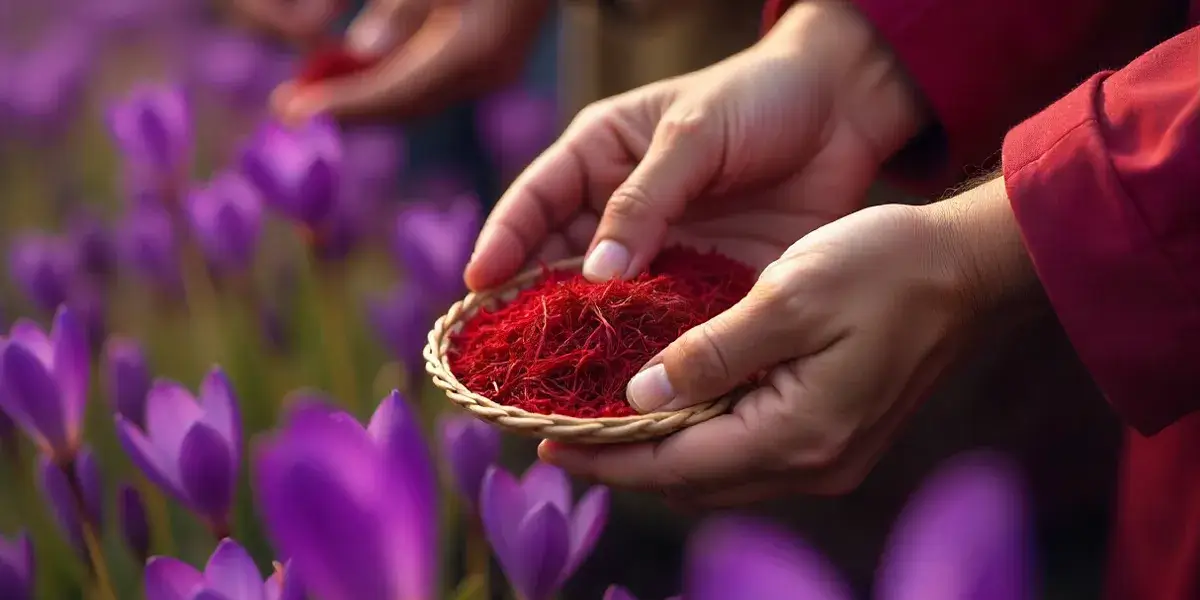
3. Afghanistan: The Rising Star with World-Class Quality
In recent years, Afghanistan has emerged as a major player in the global saffron market with impressive growth. While its production volume is still less than that of Iran and India, saffron from Afghanistan is quickly gaining a reputation as one of the highest quality saffrons in the world, with many considering it a direct competitor to Iranian and Kashmiri saffron. The main hub for its production is the western province of Herat, which has an ideal climate and soil for saffron cultivation, very similar to Iran’s Khorasan province. Afghan farmers focus on organic methods and precise processing, yielding a product that has captured the attention of international markets. The most significant proof of this quality is winning multiple awards from the International Taste and Quality Institute (ITQI) in Brussels, which has solidified Afghanistan’s place among the best quality saffron-producing countries. Furthermore, saffron cultivation is promoted as a profitable alternative to opium poppy farming, playing a crucial role in the country’s economic and social development.
4. Spain: The Hub for Saffron Packaging and Trade
Spain is another major name on the list of saffron-producing countries, with its saffron, particularly from the La Mancha region, being well-known. However, there’s an important distinction regarding Spanish Saffron: the country is one of the largest importers of saffron, especially from Iran. A significant portion of the saffron sold as “Spanish” is actually Iranian saffron that is packaged and re-exported from Spain. Authentic Spanish-grown saffron typically has a milder flavor and aroma compared to its Iranian counterpart. Its well-known varieties include Crème and Spanish Superior. Therefore, Spain is recognized more as a global trading and packaging hub for saffron rather than a mass producer.
read more: Spanish saffron vs Persian saffron
5. Greece: Superior Quality from Kozani
Next on our list is Greece. Greek saffron, primarily cultivated in the northern region of Kozani, is renowned for its exceptional, organic quality and holds a Protected Designation of Origin (PDO) status. The Kozani Saffron Cooperative is one of the most reputable producers globally, and its product is favored by many countries due to its strict quality standards. If you are looking for guaranteed high-quality saffron from Europe, the product from this region is one of the best choices available.
6. Morocco: Red Gold of the Atlas Mountains
Morocco also has a significant share in global saffron production. Most of the country’s saffron is grown in the Taliouine region, located at the foot of the Atlas Mountains. Thanks to its favorable weather and soil, this area is a perfect location for growing saffron. Moroccan saffron is known for its high quality and deep red color and plays a vital role in the country’s traditional cuisine and culture.
7. Italy: An Exclusive Saffron for High-End Cuisine
Italy may not be a mass producer, but the saffron it cultivates is of exceptionally high quality and is almost exclusively consumed domestically. Key saffron-growing regions in Italy include Abruzzo, Sardinia, and Tuscany. The most famous and prized Italian saffron is the “Zafferano dell’Aquila” from the Abruzzo region, which holds a PDO (Protected Designation of Origin) status. Due to its superior quality and meticulous harvesting process, it is highly sought after by top chefs for classic dishes like risotto. Production in Italy is limited and expensive, making it a rarity on the export market.

8. Azerbaijan: A Saffron Legacy on the Silk Road
Azerbaijan has one of the world’s most ancient histories of saffron cultivation, and its product was historically traded along the Silk Road. The main center for the country’s saffron production is the Absheron Peninsula. Azerbaijani saffron is renowned for its potent aroma and rich color. Although its production declined in past decades, the government has recently initiated efforts to revive its historic status as a producer of high-quality saffron.
9. China: A Modern Approach for Medicinal Use
China is a relatively new but growing player in the saffron industry. Provinces such as Shanghai, Shandong, and Zhejiang are its main cultivation centers. An interesting aspect of Chinese saffron is that a large portion of its production is directed towards the Traditional Chinese Medicine (TCM) market rather than culinary use, where saffron is highly valued for its medicinal properties. Using modern agricultural techniques, China is steadily increasing its production volume to meet strong domestic demand.
10. Turkey: Saffron from a World Heritage City
Turkey is also a historic producer of saffron, a fact proven by the city of Safranbolu, which takes its name from the spice and is a designated UNESCO World Heritage site. Turkish saffron is typically of good quality, with a slightly lighter color and a sweeter aroma. Today, production in Turkey is small-scale, and the product is primarily sold in local markets for use in specific Turkish desserts and Ottoman dishes.
Market Trends 2024–2025
- Global saffron demand is increasing in food, cosmetics, and pharma.
- Iran still dominates supply but faces sanctions/export hurdles.
- Spain adds value through packaging and branding.
- India’s Kashmiri saffron is gaining recognition (GI certification).
- Afghanistan is expanding exports to the Middle East and the EU.
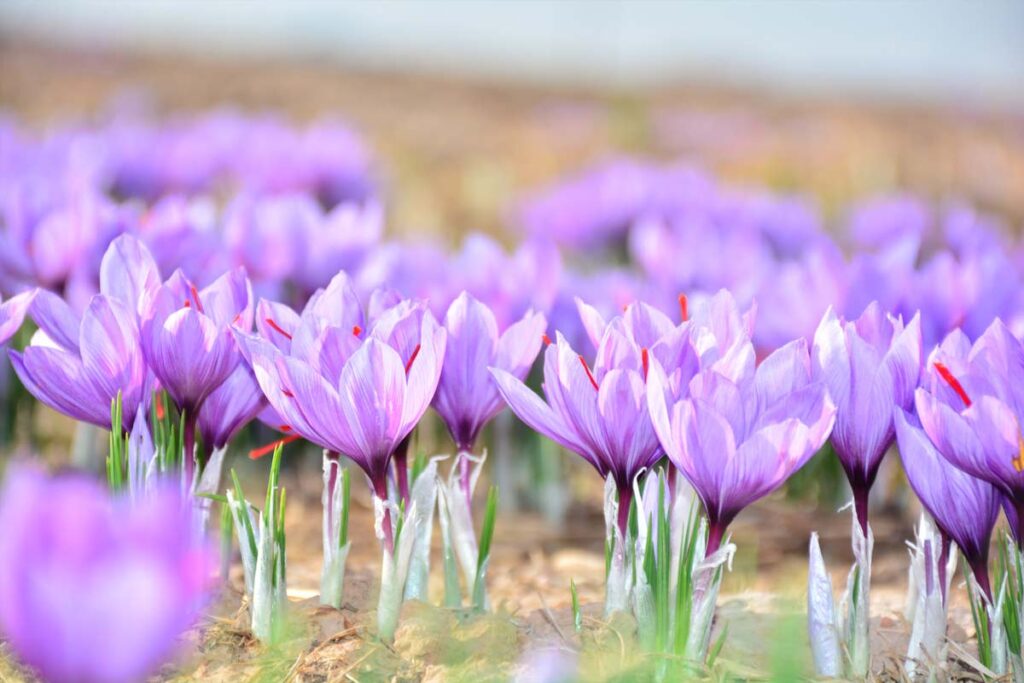
Conclusion: Saffron-Producing Countries
In this comprehensive guide, we journeyed through the world of red gold and got acquainted with the top 10 saffron-producing countries. As we saw, Iran is by far not only the largest producer of saffron in the world but is also considered by many to offer the highest quality product. Following Iran, countries like India, with its famous Kashmir saffron; Afghanistan, as the rising star with award-winning quality; and Spain, as a major trading hub, play key roles in this market.
Read more: Guide to Purchasing Saffron
This journey showed us that the world of saffron is incredibly diverse, and its quality and price heavily depend on the country and region of production. When buying saffron online or in person, it is crucial to pay attention to its origin and grade. Unfortunately, due to the high value of this spice, the market for fake saffron is also prevalent. Therefore, being familiar with methods to spot fake saffron is essential. To ensure you are purchasing a pure, high-quality product, you can buy saffron from a trusted source.
Ultimately, whether you are a professional chef, a home cook, or a trader, understanding what country saffron comes from and the unique characteristics of each region is the first step to truly appreciating and making the best use of this amazing and precious spice.
Which country produces the most saffron?
Iran, has about 85–90% of the world’s production.
Which country produces the best saffron quality?
Iranian saffron ranks highest in lab tests, but Kashmiri saffron is prized for its unique aroma, and Spanish saffron for its branding.
Why is Iranian saffron dominant in world markets?
Ideal climate and soil, large-scale farming, and consistently high crocin/safranal levels.
Is Kashmiri saffron better than Iranian?
Kashmiri saffron is aromatic but produced in small quantities; Iranian saffron is globally dominant in both quality and quantity.


